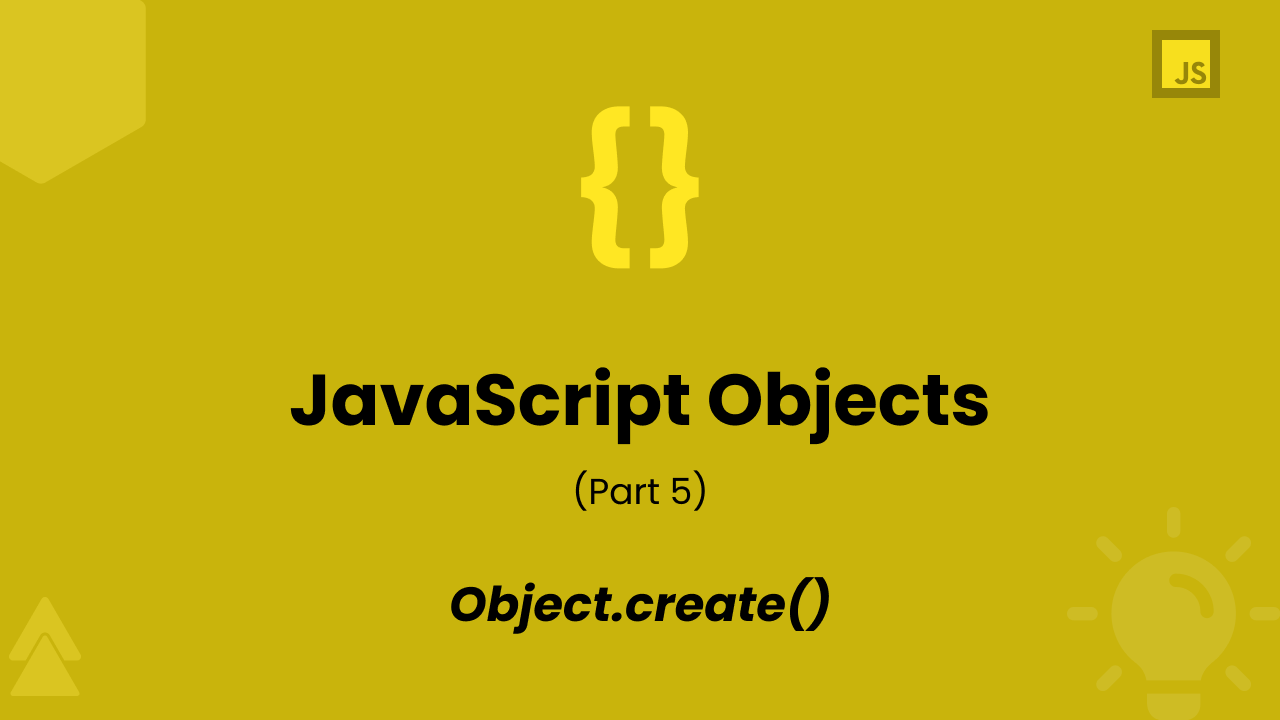Understanding JavaScript Objects (Part 5)
3 min read
Till now we learned various things about objects, how they're created and how tey behave. In this post, we'll see the Object.create() function which is a new way to create objects.
Exploring Object.create()
The Object.create() function creates a new object with the prototype set to certain object. This might not be easiest thing to understand if you haven't read the previous posts. Let's see an example to get a better overview.
const weapon = {
hit: function () {
console.log(this.damage);
}
};
const sword = Object.create(weapon);
sword.damage = 24;
sword.hit(); // 24
Here, we create an object with a hit method in it. The hit method just prints out the damage property. The Object.create() will create a new object and set the prototype of that object to be weapon. Then, we add the damage property to the sword object which is later printed by calling the hit method. We can verify that the weapon object is prototype of sword.
const weapon = {
hit: function() {
console.log(this.damage);
}
};
const sword = Object.create(weapon);
sword.damage = 24;
sword.hit(); // 24
console.log(weapon.isPrototypeOf(sword)); // true
The isPrototypeOf function returns true for the above condition. Meaning that sword inherits some properties from weapon.
Implementing Object.create()
From the sort of definition given earlier, Object.create() is fairly easy to implement.
const weapon = {
hit: function() {
console.log(this.damage);
}
};
function objectCreate(proto) {
const obj = {};
// Bad performance
Object.setPrototypeOf(obj, proto);
return obj;
}
const sword = Object.create(weapon);
sword.damage = 24;
sword.hit(); // 24
console.log(weapon.isPrototypeOf(sword)); // true
The Object.create() function creates a new object, same as the new keyword does, and sets the prototype of that new object to given object and returns it. This is not the best implementation of Object.create() as the setPrototypeOf() function has performance issues. Better use Object.create() to create one.
The problem with Object.create() is it does not have a constructor function that would run as soon as the object is created. People usually add a method in the object and use it as a constructor.
const weapon = {
init: function(damage) {
this.damage = damage;
},
hit: function() {
console.log(this.damage);
}
};
const sword = Object.create(weapon);
sword.init(24);
sword.hit(); // 24
console.log(weapon.isPrototypeOf(sword)); // true
For example, init() method is used as a constructor and is called immediately after using Object.create(). One handy thing to do is return this from the function used as constructor to chain another method.
const weapon = {
init: function(damage) {
this.damage = damage;
return this;
},
hit: function() {
console.log(this.damage);
}
};
const sword = Object.create(weapon).init(24);
sword.hit(); // 24
console.log(weapon.isPrototypeOf(sword));
Returning this will return the current object after which the init method can be chained to initialize the values.
Summary
- The
Object.create()function creates a new object with the prototype set to certain object. - The
Object.create()does not have constructor that can be used to run some code just as the object is created.
Note: This series is heavily inspired by Fun Fun Function's series on Object creation. The series may give you more insights as it has live coding examples.
